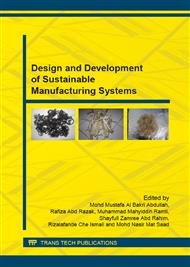p.403
p.408
p.413
p.417
p.421
p.429
p.434
p.439
p.444
Appraisal of Mega Float - Floating Offshore Remote Terminal (FORT) on Catenary Mooring for Deep Water
Abstract:
With the development of offshore fishing and deep sea exploitation intensifies, floating offshore remote terminal (FORT) which having many advantages can better adapt to the complicated environment of deep sea in numerous offshore platform. Due to the hull likely to to resonance phenomenon, FORT has more intense motion compared to other hull form types. Therefore, the main challenge of FORT in the deep sea operation is to design effective mooring system. This paper introduced the dynamic response by utilizing the computational effort associated with time-domain simulation of single anchor leg mooring (SALM). The influenced or the effect of significant wave height (SWH) over the structure is discussed. It is shown that a comparison of different SWH value in terms of their stability properties is sufficient and adequate; relative merit is assessed through comparison of full systems that have been designed to minimum cost, and to common performance specifications. It is found that single point or catenary systems, can outperform both static and dynamic solutions at the preliminary stage. Moreover, the results indicated that the position ability and mooring strength of SALM system whose intermediate material is studless chain of catenary mooring system on the premise that satisfies API specification at the same time.
Info:
Periodical:
Pages:
421-426
Citation:
Online since:
November 2015
Keywords:
Price:
Сopyright:
© 2015 Trans Tech Publications Ltd. All Rights Reserved
Share:
Citation:


